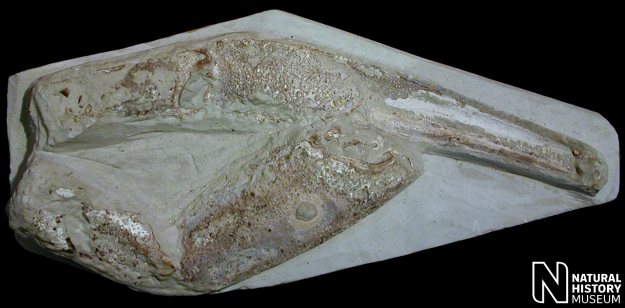
|
Undescribed |
A very small number of the chalk lobsters encountered in museum collections cannot be comfortably referred to either P. sussexensis or E. leachii. For example, some chelipeds resemble those of Hoploparia, a genus well known from the Gault and Greensand (Aptian-Albian) which predate the Grey Chalk. These specimens can be identified by their flattened nature, keeled margins, elongate palms which broaden towards the fingers, lack of coarse thorny ornament and presence of fine granular ornament. The carapace is presently unknown. A formal description of this varied material is wanting and the number of taxa warranted is unclear.

1). Hoploparia sp.? A pair of chelipeds displaying characters which distinguish them from Palaeastacus & Enoploclytia, but, at cursory examination, compare well with Hoploparia (Grey Chalk, Folkestone, Kent (x1.4, BMNH (British Museum (Natural History) London) In.27874). Image © 2007 The Natural History Museum, by kind permission. ((
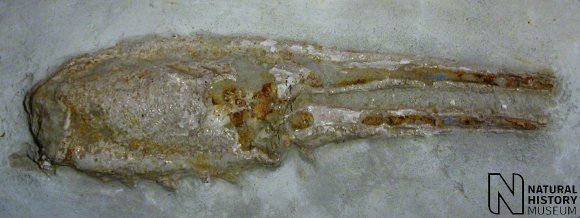
2). Hoploparia sp.? An isolated cheliped: palm profile suggests that this may be taxonomically distinct from the specimen in figure 1 (x1.2. Burham, Kent, BMNH (British Museum (Natural History) London) 46404). Image © 2007 The Natural History Museum, by kind permission.
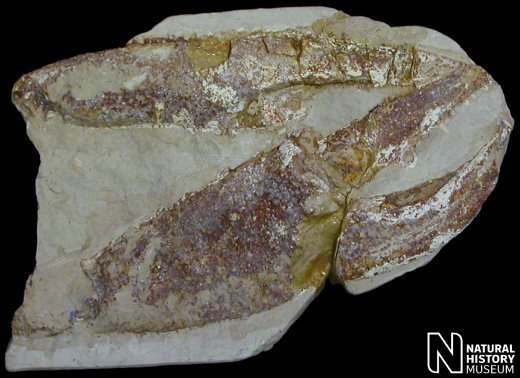
3). Hoploparia sp.? A pair of large chelipeds with broad palms: overall characteristics suggest that this specimen is taxonomically distinct from those in figures 1 & 2, or is evidence of sexual dimorphism (Glynde, Sussex (x1.0, BMNH (British Museum (Natural History) London) 59825). Image © 2007 The Natural History Museum, by kind permission.
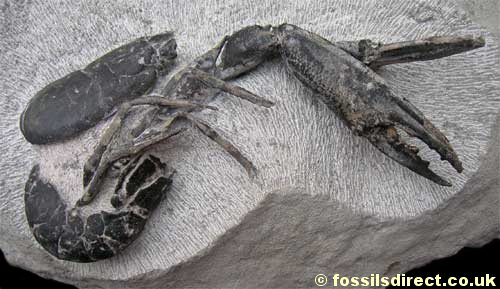
4). Hoploparia longimana, near complete specimen from the Greensand of Lyme Regis, included here for comparison of the chelipeds with those in figure 3 (x 1.5). Image supplied by Martin Rigby of Fossils Direct and used by kind permission.
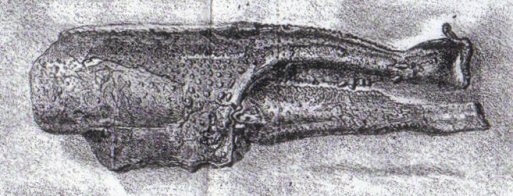
5). Macruran cheliped. An apparently unique chalk specimen figured in Dixon (1860), current whereabouts unknown. The expanded claw-tips may be an artefact of crushing, though this would be expected to produce a degree of fracturing which is not seen here - the drafting of J. de C. Sowerby in Dixon 1860 is typically accurate enough to capture such details (x 1.5).
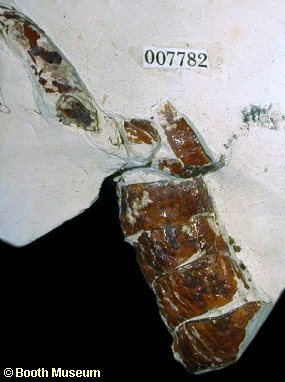
6). Partial malacostracan abdomen. Tail section of an unknown malacostracan (x1.8, Grey Chalk, Clayton railway tunnel, near Brighton, Sussex, Willett collection, Booth Museum; BMB 007782, by kind permission of John Cooper).